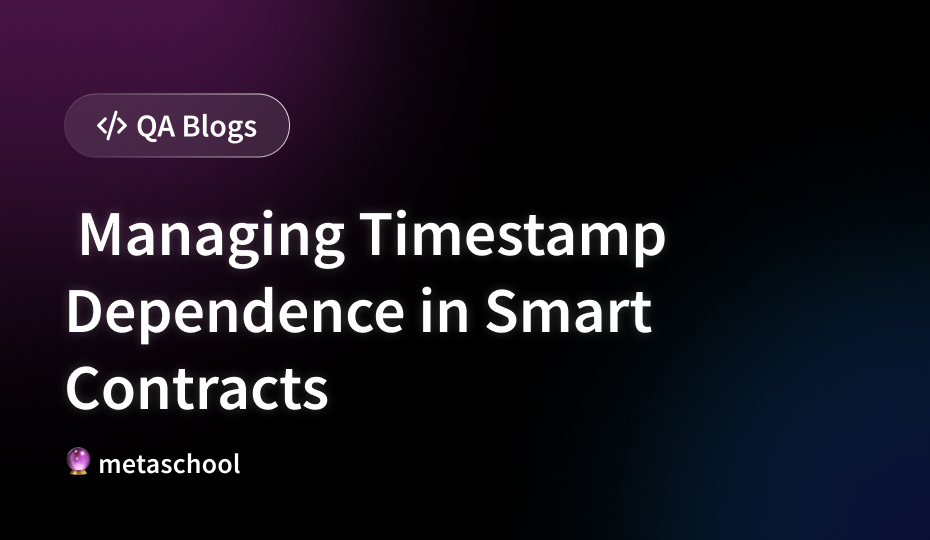Table of Contents
Timestamps play a crucial role in smart contract development, enabling time-sensitive operations such as token vesting, voting mechanisms, and auction bidding. However, relying on timestamps introduces vulnerabilities and complexities due to blockchain’s decentralized and asynchronous nature. In this article, we explore the challenges associated with timestamp dependence in smart contracts and present strategies and best practices to mitigate risks effectively.
Understanding Timestamp Dependence
Timestamp dependence refers to the reliance on the current timestamp (block timestamp) or external time sources within smart contracts to execute certain logic or enforce time-based conditions. Smart contracts often use timestamps for various purposes, including locking funds for a specific period, scheduling future events, or implementing time-sensitive rules.
Challenges and Risks
While timestamps offer flexibility and functionality, they also introduce several challenges and risks:
- Blockchain Variability: The block timestamp provided by the blockchain is not entirely predictable and may vary due to factors such as network congestion, mining difficulty adjustments, or miner manipulation. This variability can lead to inconsistencies in time-based operations.
- Front-Running Attacks: Malicious actors may exploit timestamp dependence to manipulate the order of transactions and gain unfair advantages in decentralized applications (DApps). Front-running attacks involve preempting or copying pending transactions to manipulate outcomes, such as bidding in auctions or participating in token sales.
- Time Drift and Synchronization Issues: Nodes in a blockchain network may experience time drift, where their system clocks deviate from the network’s consensus time. Inaccurate timestamps or synchronization issues can disrupt time-sensitive operations and compromise the integrity of smart contracts.
Strategies for Mitigation
To address timestamp dependence effectively and mitigate associated risks, developers can implement the following strategies and best practices:
- Use Relative Time Intervals: Instead of relying on absolute timestamps, consider using relative time intervals or block numbers to measure time-based conditions. This approach reduces vulnerability to timestamp manipulation and ensures consistent behavior across different blockchain nodes.
- Implement Time Locks with Caution: When implementing time locks or vesting schedules, consider using conservative estimates or safety margins to account for potential variations in block timestamps. Additionally, incorporate mechanisms for gracefully handling edge cases, such as time adjustments or delays.
- Utilize Oracle Services: Integrate external time oracles or timestamp verification services to obtain reliable and tamper-resistant timestamps for critical operations. Oracle services fetch timestamps from trusted sources, providing a more accurate and consistent time reference for smart contracts.
- Deploy Commit-Reveal Schemes: Employ commit-reveal schemes or cryptographic commitments to conceal sensitive information, such as bids or votes, until a predetermined reveal phase. This prevents front-running attacks by obfuscating transaction details until the reveal phase, ensuring fairness and transparency.
- Implement Delayed Execution Patterns: Consider decoupling time-sensitive operations from immediate execution by implementing delayed execution patterns, such as state channels or asynchronous workflows. Delayed execution allows for time-locked actions without exposing vulnerabilities to timestamp manipulation.
Conclusion
Timestamp dependence is a fundamental aspect of smart contract development, enabling a wide range of time-sensitive functionalities. However, it also introduces challenges and risks that must be addressed with caution and foresight. By implementing strategies such as relative time intervals, oracle services, commit-reveal schemes, and delayed execution patterns, developers can effectively manage timestamp dependence and build robust and resilient smart contracts capable of withstanding the dynamic nature of blockchain environments.
